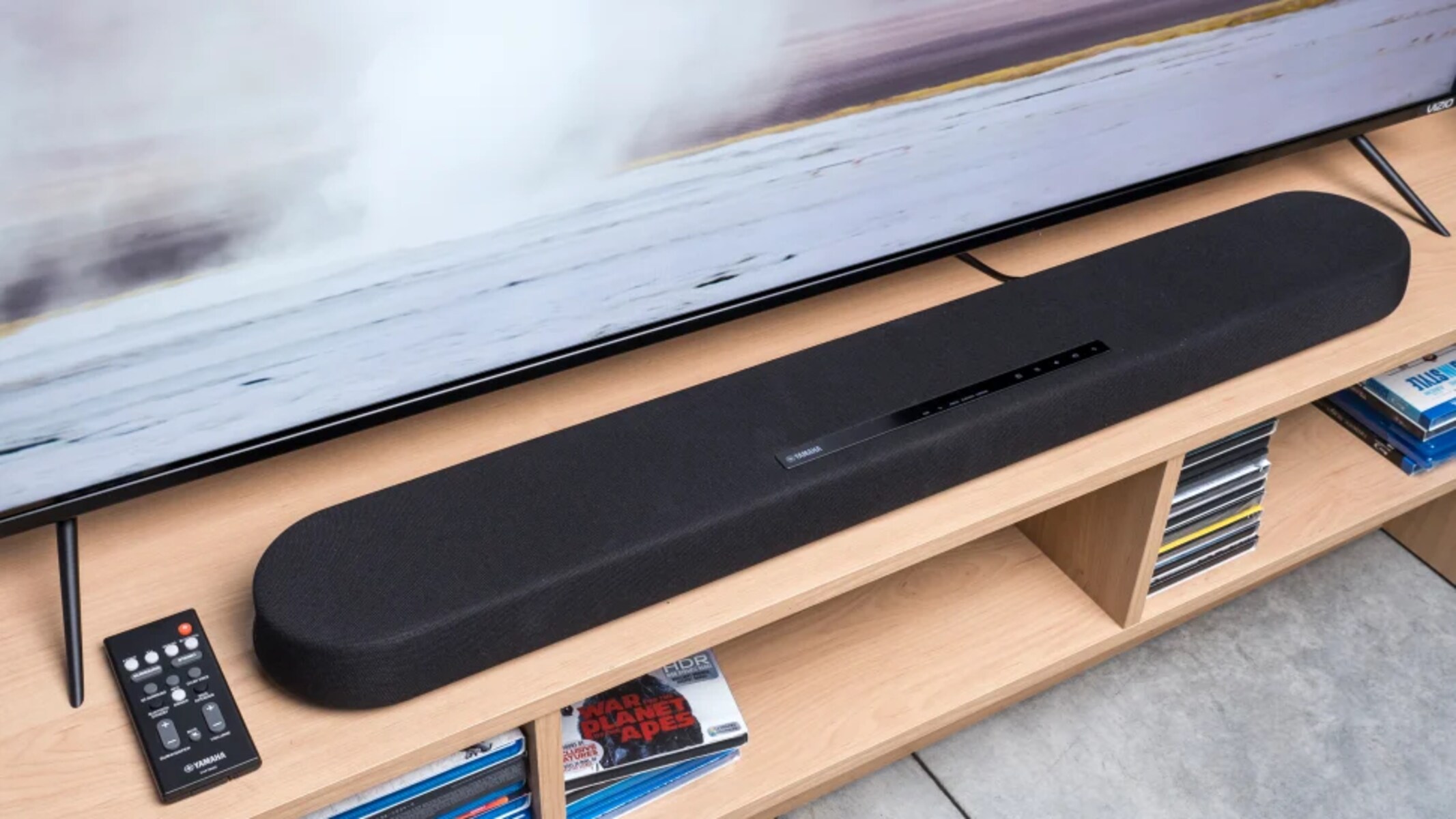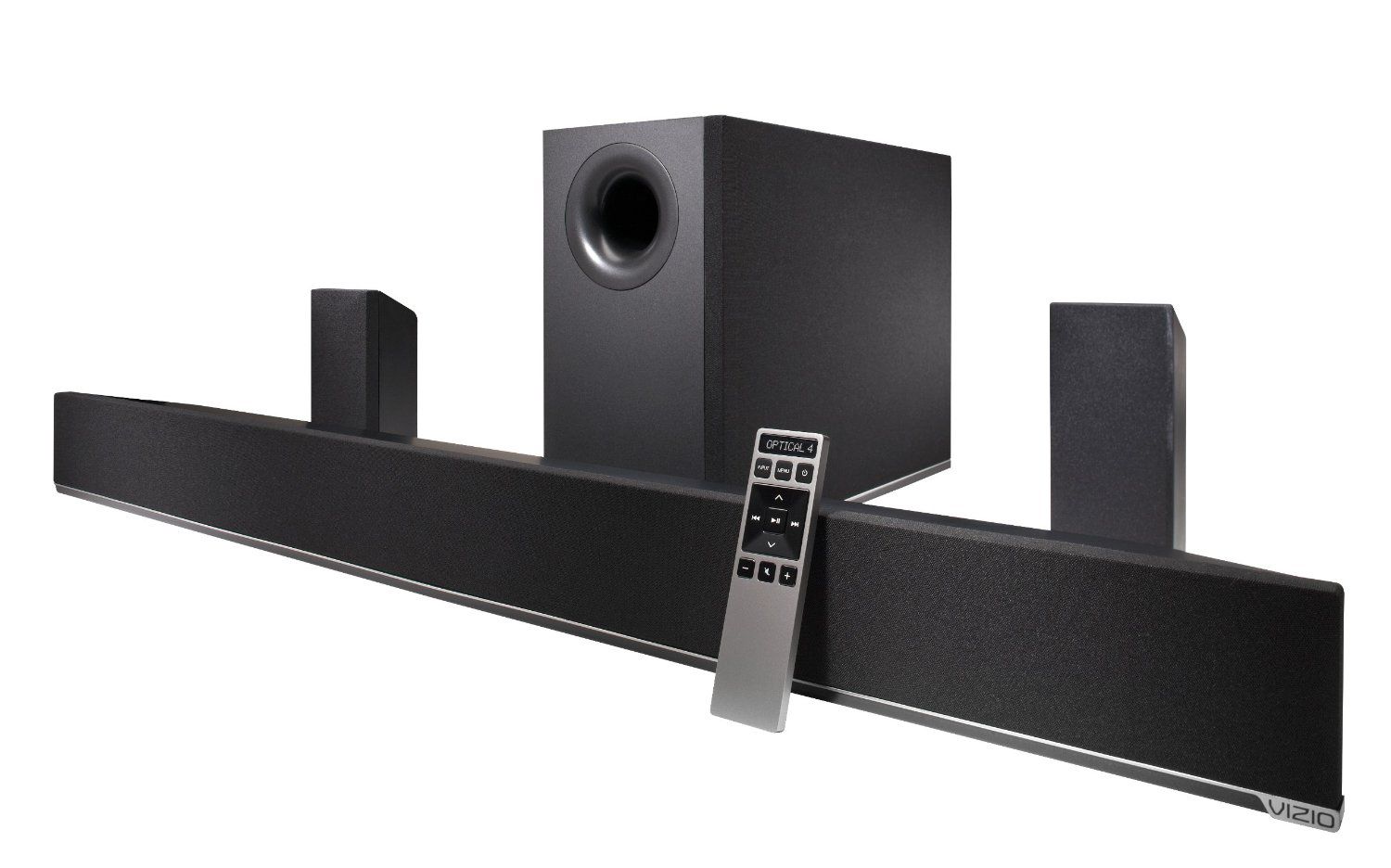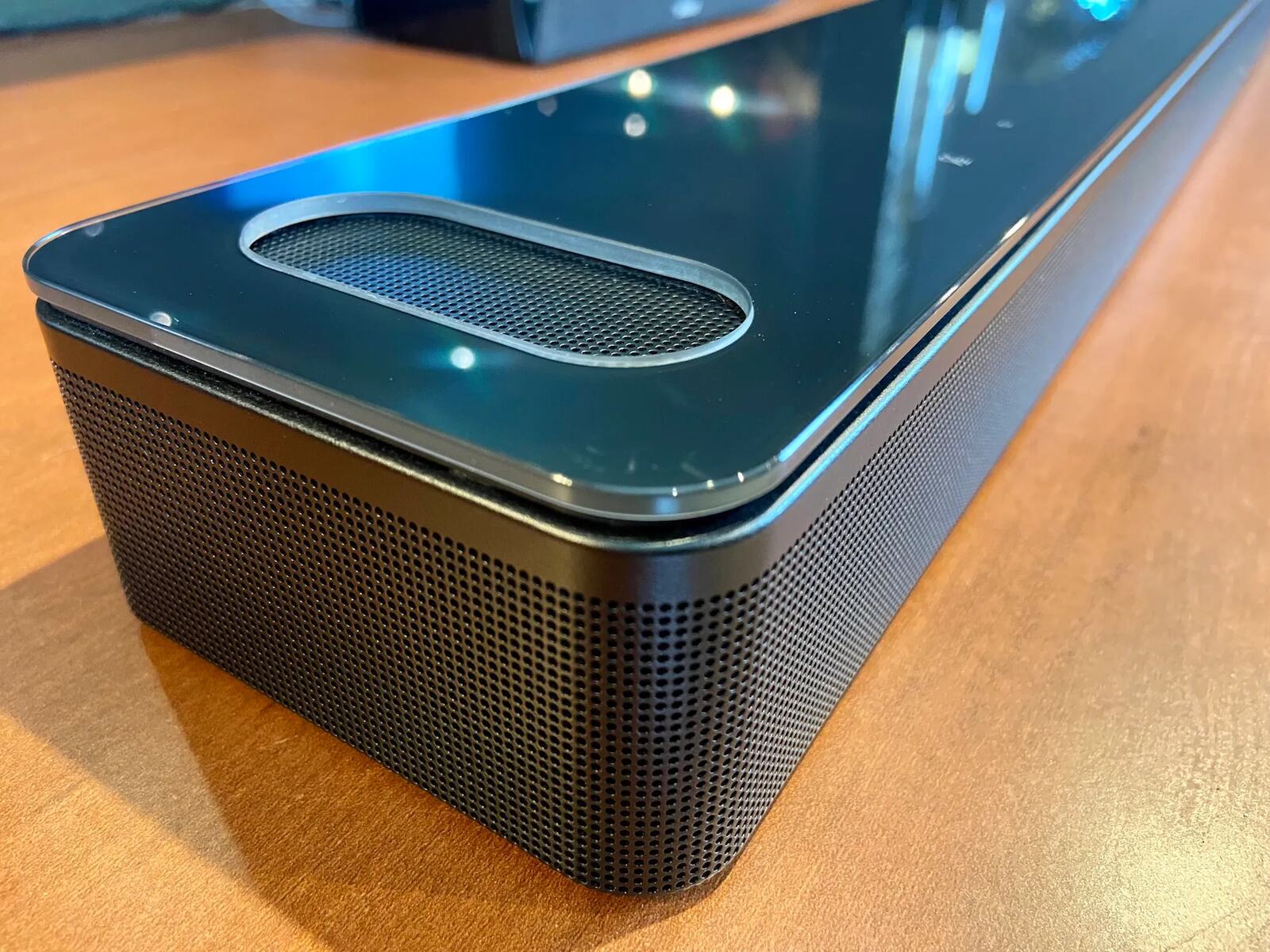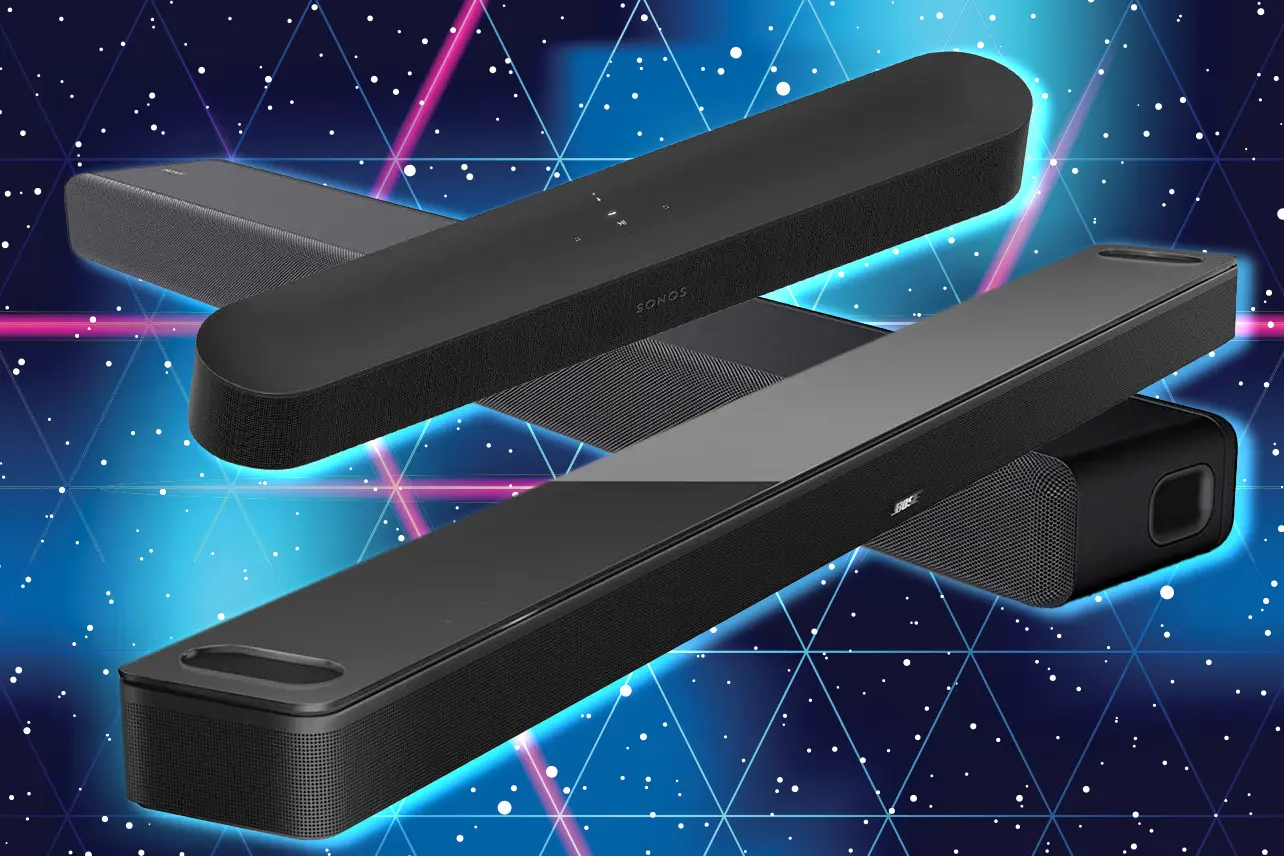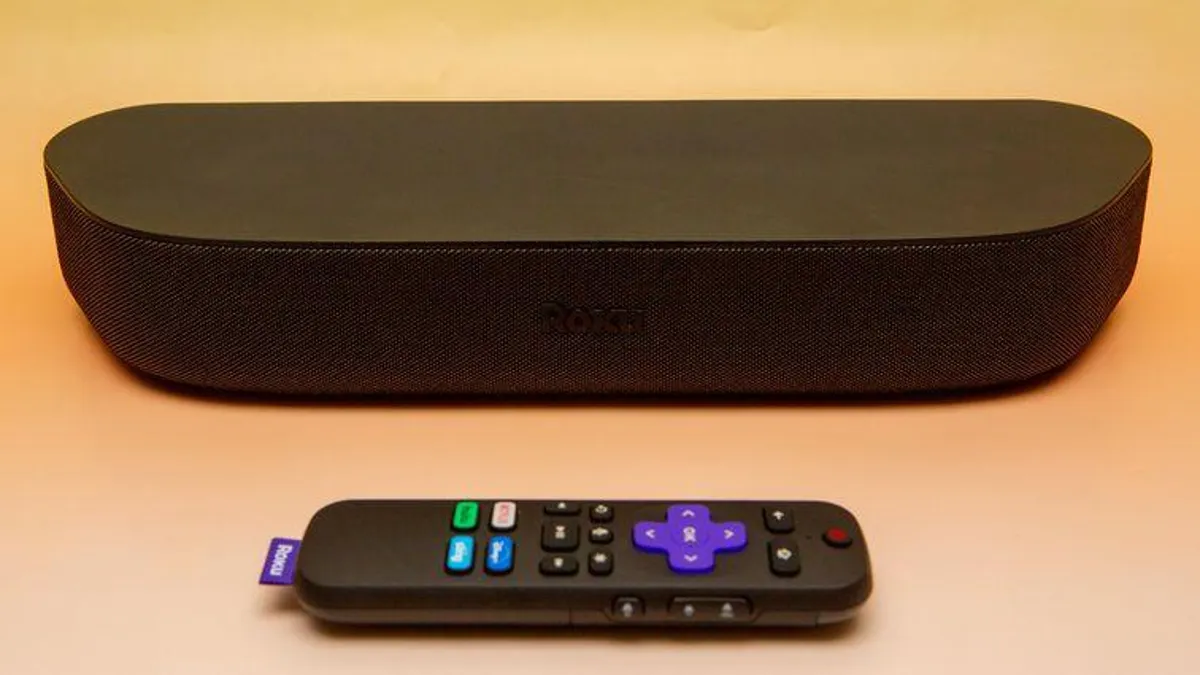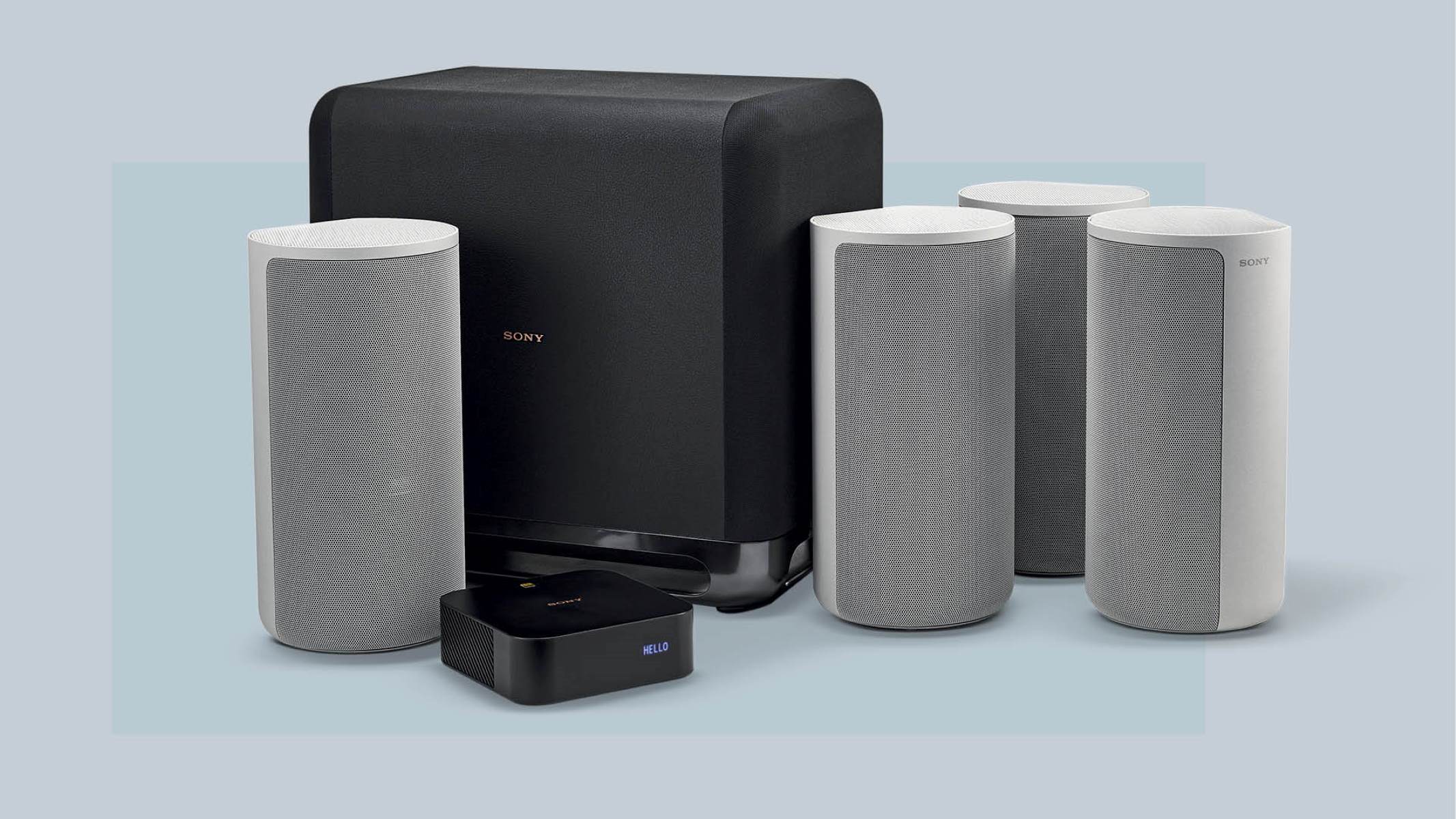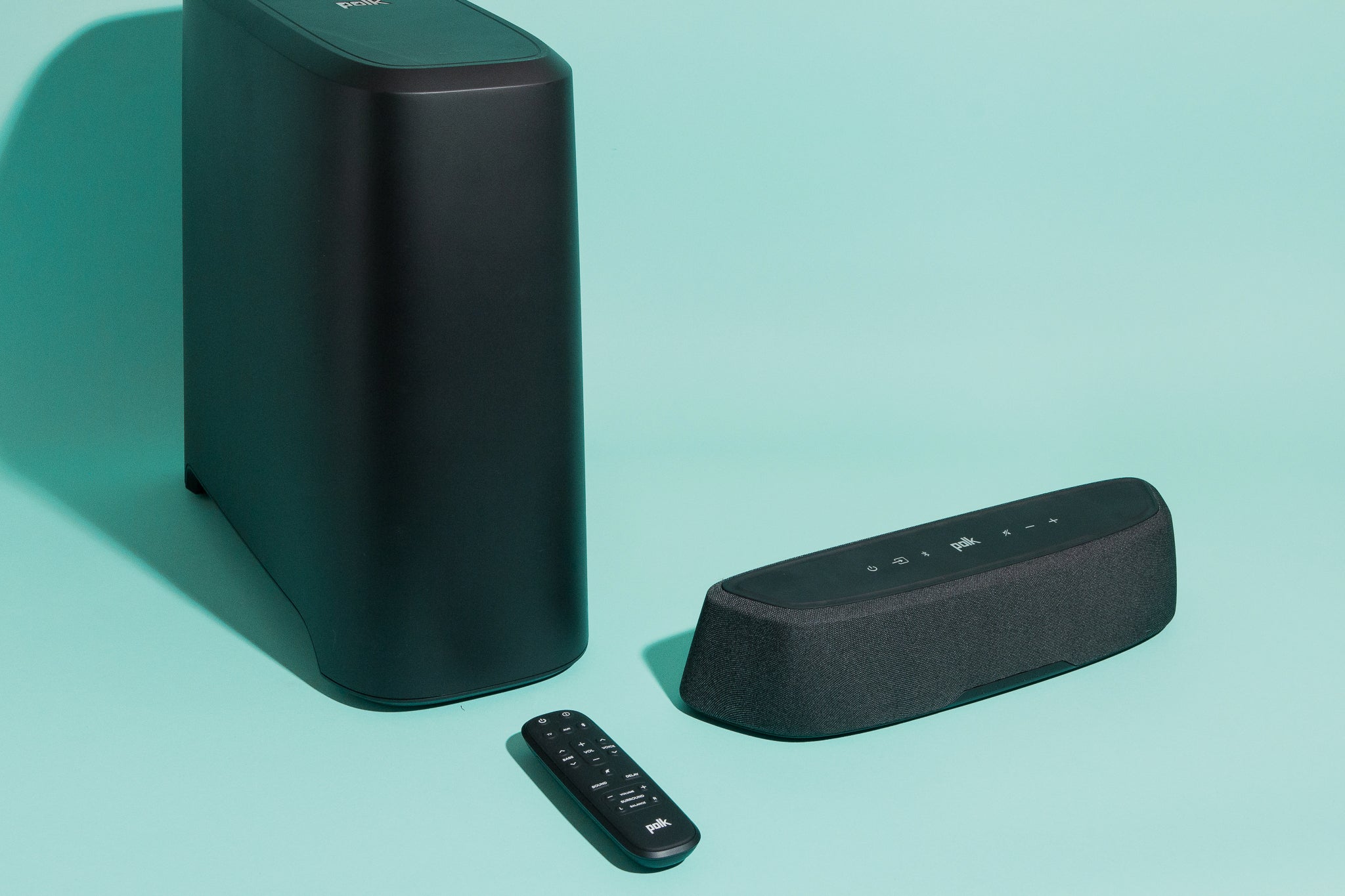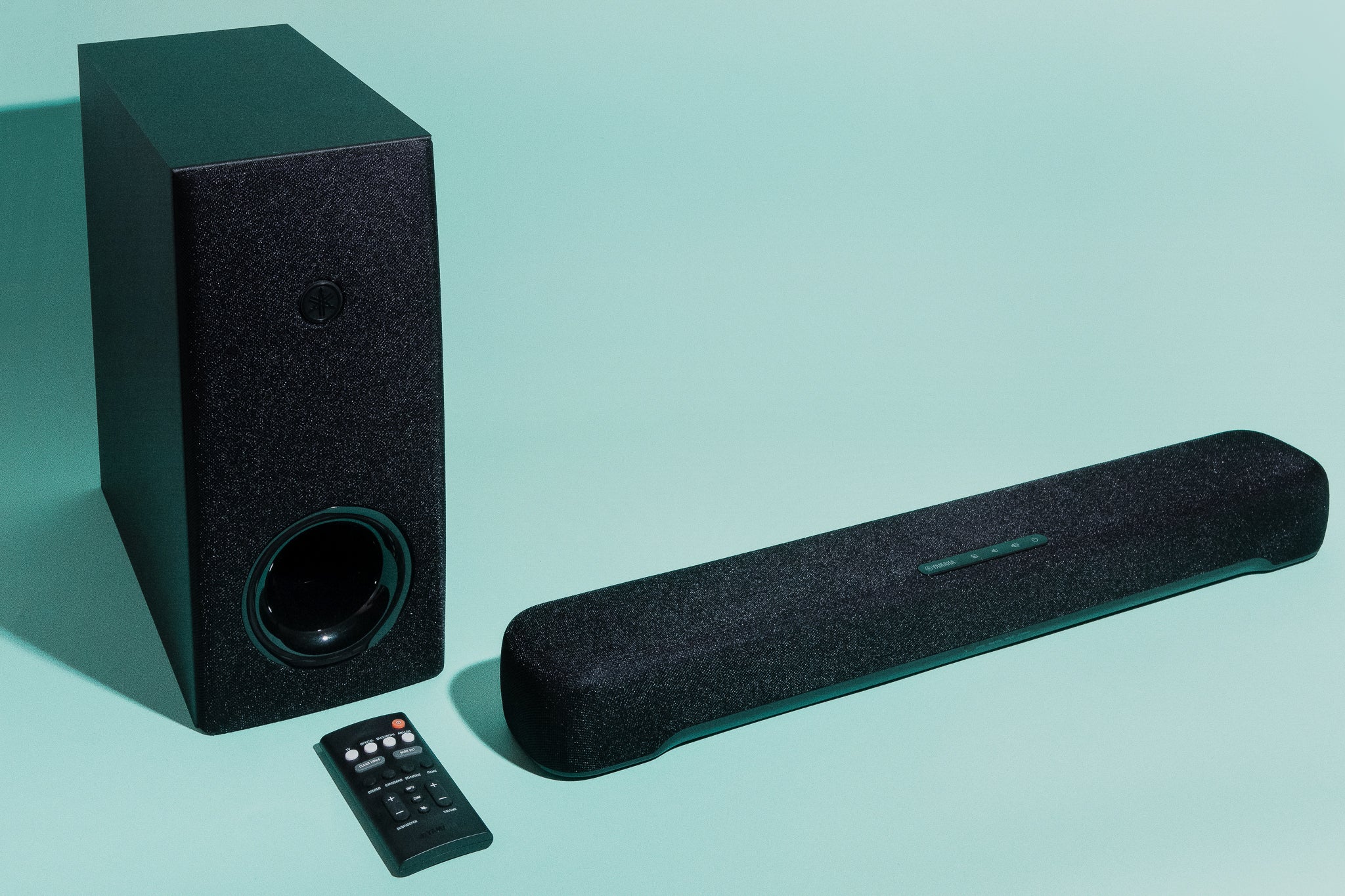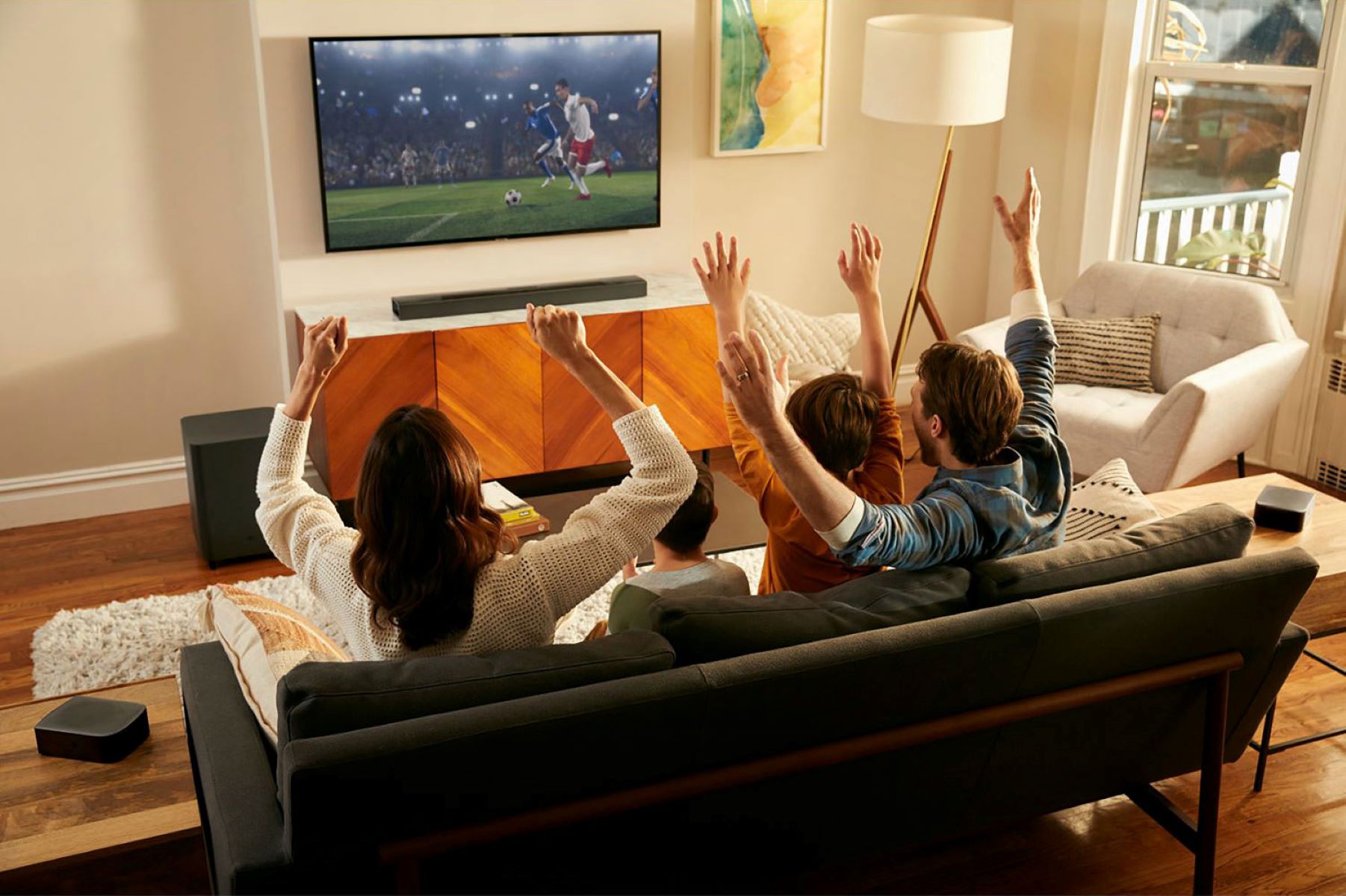Introduction
Welcome to our guide on determining the ideal wattage for a soundbar. If you’re in the market for a new soundbar or looking to upgrade your current one, you may be wondering, “How many watts does a soundbar need?” Wattage plays a crucial role in the audio performance of your sound system, and understanding the appropriate wattage is essential for achieving the best audio experience.
A soundbar is a compact speaker system that is designed to enhance the audio quality of your TV, gaming console, or other entertainment devices. It is a popular choice for those who want better sound without the complexity and clutter of a traditional surround sound system. Soundbars come in various sizes and power ratings, and finding the right wattage is crucial for ensuring optimal audio performance.
Before we dive into the wattage requirements, let’s first establish what watts actually mean in the context of soundbars. In simple terms, a watt is a unit of power that measures the amount of energy an electrical device uses or produces. In the case of soundbars, the wattage indicates the power output of the speaker system. A higher wattage generally means a louder and more powerful sound output.
Now, let’s address the question at hand: how many watts does a soundbar need? The answer depends on several factors, including the size of the room, desired volume level, audio quality expectations, connectivity options, and additional features. By considering these factors, you can determine the appropriate wattage range that will deliver an immersive and satisfying audio experience for your specific needs.
What is a soundbar?
A soundbar is a compact speaker system that is designed to improve the audio quality of your entertainment setup. It is a popular alternative to traditional home theater speaker systems, as it offers enhanced sound without the need for multiple speakers and complex wiring.
Soundbars are typically long and slim, resembling a bar, hence the name. They are designed to be placed directly in front of your TV or mounted on a wall below or above the screen. Some soundbars come with a separate subwoofer for added bass, while others have built-in subwoofers.
One of the main advantages of a soundbar is its simplicity. It is easy to set up and requires minimal wiring compared to traditional speaker systems. Most soundbars can be connected to your TV or other audio devices using a single HDMI or optical cable.
Soundbars use advanced audio technology to create a virtual surround sound effect. By strategically positioning speakers and using digital signal processing, soundbars can produce immersive sound that fills the room, simulating a surround sound experience.
In addition to improving the audio quality of your TV, soundbars can also be used for music playback from your smartphone, tablet, or other devices. Many soundbars offer Bluetooth or Wi-Fi connectivity, allowing you to stream music wirelessly, further expanding their versatility.
Soundbars come in various sizes and power ratings, ranging from compact models for small rooms to larger, high-powered units for larger spaces. They often include features such as equalizer settings, audio presets, and even voice assistant integration, providing a personalized listening experience.
In summary, a soundbar is a sleek and convenient solution for enhancing your audio experience. It offers improved sound quality, easy setup, and compatibility with various devices. Whether you’re watching movies, playing games, or listening to music, a soundbar can elevate your entertainment to new heights.
What are watts?
Watts are a unit of power that measure the amount of energy used or produced by an electrical device. In the context of soundbars, wattage refers to the power output of the speaker system.
When it comes to audio equipment, including soundbars, wattage plays a crucial role in determining the loudness and overall performance of the speakers. In simple terms, higher wattage generally means a more powerful and louder sound output.
However, it’s important to note that wattage alone doesn’t tell the whole story. The efficiency and design of the speakers, the quality of components, and the overall construction of the soundbar also contribute to the audio performance. So, while wattage is a significant factor, it’s not the sole determinant of audio quality.
The power output of a soundbar is commonly expressed in two types of measurements: RMS (Root Mean Square) power and peak power. RMS power refers to the continuous power output that the soundbar can sustain without distortion, while peak power represents the maximum power it can briefly handle for short bursts.
When choosing a soundbar, it’s important to look at the RMS power rather than the peak power. The RMS power is a more accurate representation of the soundbar’s capabilities for everyday use, as it indicates the sustained power output without compromising audio quality.
The wattage requirements for a soundbar depend on various factors, such as the size of the room, desired volume level, and personal preferences. A small soundbar with lower wattage might be suitable for a small bedroom, while a larger soundbar with higher wattage may be necessary for a spacious living room.
It’s worth noting that higher wattage doesn’t always equate to better audio quality. A soundbar with well-designed speakers, efficient amplifiers, and quality components can deliver impressive sound with lower wattage. Similarly, a high-wattage soundbar with subpar components may not provide the desired audio experience.
Ultimately, when considering the wattage of a soundbar, it’s important to look for a balance between power output, audio quality, and the specific needs of your setup. By taking into account other factors, such as the room size and layout, desired volume levels, and your listening preferences, you can determine the ideal wattage for your soundbar and achieve a satisfying audio experience.
How many watts does a soundbar need?
The question of how many watts a soundbar needs depends on several factors, including the size of the room, desired volume levels, audio quality expectations, connectivity options, and additional features.
Room size and layout play a crucial role in determining the wattage requirements of a soundbar. Larger rooms require more power to fill the space with sound effectively. If you have a spacious living room or an open-concept area, a soundbar with higher wattage will be ideal to ensure adequate coverage and volume.
Consider your desired volume levels when choosing the wattage for your soundbar. If you enjoy watching movies or listening to music at high volumes, a soundbar with higher wattage will be necessary to avoid distortion and maintain audio clarity. On the other hand, if you prefer lower volume levels, a soundbar with moderate wattage may be sufficient.
Audio quality is another factor to consider when determining wattage requirements. Higher wattage soundbars often offer better amplification and can deliver more detailed and immersive sound. If you are an audiophile or have high audio quality expectations, a soundbar with higher wattage and superior audio components would be recommended.
Connectivity options should also be taken into account. If you plan to connect multiple devices to your soundbar, such as a TV, gaming console, or streaming device, consider a soundbar with higher wattage to handle the power demands of multiple sources. Additionally, check if the soundbar has HDMI ARC (Audio Return Channel) support, as it allows for better audio transmission and control over your connected devices.
Lastly, consider any additional features and functionality that you require. Some soundbars come with built-in subwoofers or offer the option to connect an external subwoofer for enhanced bass. If you enjoy deep, impactful bass, opting for a soundbar with higher wattage and a subwoofer would be beneficial.
In summary, there is no one-size-fits-all answer to how many watts a soundbar needs. It depends on your individual preferences, room size, desired volume levels, audio quality expectations, connectivity needs, and desired features. By considering these factors, you can determine the appropriate wattage range for your soundbar and ensure an immersive and enjoyable audio experience.
Factors to consider when determining wattage requirements
When determining the wattage requirements for a soundbar, there are several important factors to consider. These factors will help you find the ideal wattage range that suits your specific needs and preferences. Here are the key factors to keep in mind:
1. Room size and layout: The size of the room and its layout play a significant role in determining the wattage requirements. Larger rooms will require soundbars with higher wattage to ensure adequate sound coverage and volume. Consider the dimensions of your room and any open spaces that may affect the sound dispersion.
2. Desired volume levels: Consider your desired volume levels when choosing the wattage for your soundbar. If you enjoy listening to movies, music, or games at high volumes, a soundbar with higher wattage will be necessary to prevent distortion and maintain audio clarity. On the other hand, if you mostly prefer lower volume levels, a soundbar with moderate wattage may suffice.
3. Audio quality expectations: If you have high expectations for audio quality and want a rich and immersive sound experience, consider soundbars with higher wattage. Higher wattage often correlates to better amplification and superior audio components, resulting in enhanced audio quality with more detailed sound reproduction.
4. Connectivity options: Take into account the connectivity options you require. If you plan to connect multiple devices to your soundbar, such as a TV, gaming console, or streaming device, opt for a soundbar with higher wattage to handle the power demands of multiple sources. Additionally, ensure that the soundbar has the necessary connectivity ports and features, such as HDMI ARC support, to accommodate your devices.
5. Additional features and functionality: Consider any additional features or functionality that you desire in a soundbar. Some soundbars come with built-in subwoofers or offer the option to connect an external subwoofer for deeper bass reproduction. If you enjoy a more intense and powerful bass experience, look for soundbars with higher wattage and subwoofer capabilities.
By considering these factors, you can determine the appropriate wattage requirements for your soundbar. It’s important to find a balance between power output, audio quality, room size, desired volume levels, connectivity needs, and any additional features you desire. Taking all these factors into account will ensure that your soundbar delivers an immersive and satisfying audio experience for your specific setup.
Room size and layout
When determining the wattage requirements for a soundbar, the size and layout of the room are key factors to consider. The size of the room will influence the amount of power needed to fill the space with sound effectively, while the layout will affect the sound dispersion and overall listening experience.
In general, larger rooms will require soundbars with higher wattage to ensure sufficient volume and coverage. Sound waves disperse as they travel, so a more powerful soundbar will be able to fill a larger room with sound more effectively. If you have a spacious living room or an open-concept area, a soundbar with higher wattage will be ideal to avoid the audio sounding weak or drowned out by the room’s size.
On the other hand, for smaller rooms or bedrooms, a soundbar with lower wattage may be sufficient. You don’t want to overpower a smaller space with excessive wattage, as it can lead to distortion or an unbalanced audio experience. In such cases, a soundbar with moderate wattage will be suitable for providing clear and enjoyable audio without overwhelming the room.
Consider the layout of your room as well. The placement of furniture, walls, and other objects can impact the bounce and dispersion of sound waves. If you have an open floor plan or a room with a lot of hard surfaces, it may necessitate a higher wattage soundbar to compensate for possible sound reflections or loss.
If your room has irregular shapes or features, such as alcoves, niches, or multiple openings, it’s important to consider how the sound will propagate in these areas. In some cases, you may need to strategically position the soundbar or consider additional speakers to ensure even audio distribution throughout the room.
Be mindful of any obstacles or obstructions that may affect the sound quality. Reflective surfaces, large furniture, or heavy curtains can absorb or diffuse sound, impacting the overall audio experience. In such cases, a soundbar with higher wattage may help overcome these obstacles and deliver better sound performance.
In summary, when considering the wattage requirements for a soundbar, it’s important to take into account the size of the room and its layout. The general rule of thumb is that larger rooms require higher wattage to fill the space adequately, while smaller rooms may require lower wattage to avoid overpowering the space. Additionally, consider any obstacles or obstructions within the room that may affect the sound propagation. By considering these factors, you can choose a soundbar with the appropriate wattage that suits the size and layout of your room, ensuring an optimal listening experience.
Desired volume
When determining the wattage requirements for a soundbar, your desired volume levels play a crucial role. Some people prefer to listen to their audio content at lower, more subtle volume levels, while others enjoy a more immersive experience with higher volume levels. Understanding your preferred volume range will help you choose the right wattage for your soundbar.
If you tend to listen to movies, music, or games at higher volume levels, it’s important to consider a soundbar with higher wattage. This is because higher wattage soundbars are generally capable of producing louder and more powerful sound outputs without distortion. The additional power allows the soundbar to maintain audio clarity even at higher volumes, providing you with a dynamic and engaging listening experience.
On the other hand, if you typically listen at lower volume levels or in a quiet environment, a soundbar with lower wattage may be sufficient. You don’t necessarily need excessive power if you don’t frequently turn up the volume. In these cases, a soundbar with moderate wattage can deliver clear and balanced sound without overwhelming your listening space.
It’s worth noting that the desired volume levels may also be influenced by the content you consume. For example, action-packed movies often have explosive sound effects and intense sequences, which may require higher volume for full immersion. In contrast, dialogue-heavy content, such as TV shows or podcasts, may require lower volume levels to prioritize clear spoken words.
Keep in mind that everyone’s perception of volume can vary. What may be loud to one person may be too quiet for another. It’s essential to consider your personal listening preferences and adjust the volume levels according to your comfort and enjoyment. If you find that your soundbar lacks the necessary power to meet your desired volume levels, it may be worth considering a higher wattage option.
Ultimately, the desired volume level is a subjective preference. When choosing the wattage for your soundbar, consider how you typically enjoy your audio content and whether you lean towards higher or lower volume levels. By selecting a soundbar with the appropriate wattage that aligns with your desired volume range, you can ensure an immersive and satisfying audio experience during your movie nights, music sessions, or gaming adventures.
The audio quality of your soundbar
When determining the wattage requirements for a soundbar, considering the audio quality is paramount. A soundbar’s wattage alone doesn’t guarantee superior audio performance. Instead, it is important to assess the overall audio quality, which is influenced by various factors in addition to wattage.
Higher wattage soundbars often offer better amplification and power output, which can contribute to improved audio quality. However, other aspects such as speaker design, sound processing, and the quality of components also play crucial roles in delivering an exceptional audio experience.
Look for soundbars that boast well-designed speakers with a wide frequency response range. A wider frequency response ensures that the soundbar can reproduce both low and high frequencies accurately, resulting in a balanced and immersive soundstage. Additionally, pay attention to the driver size and configuration, as larger drivers can often deliver more powerful and detailed sound.
Sound processing technologies, such as Dolby Atmos or DTS:X, can significantly enhance the audio experience by creating a three-dimensional soundstage. These technologies work by bouncing sound off the walls and ceiling, resulting in a more immersive and enveloping sound experience. If you’re seeking a heightened audio experience, consider soundbars that support these advanced sound formats.
Furthermore, consider the quality of the components used in the soundbar. Higher quality internal components, such as amplifiers and codecs, can contribute to cleaner and more accurate audio reproduction. Look for soundbars that have received positive reviews for their audio performance and consider brands that have a reputation for producing high-quality audio equipment.
It’s also worth noting that audio quality is subjective, and what sounds good to one person may not be the same for another. If possible, listen to demos or read reviews to get an understanding of the sound signature and performance of the soundbar you are considering. This will help you determine if it meets your personal audio quality expectations.
Remember that wattage is just one aspect of audio quality, and a higher wattage soundbar doesn’t automatically guarantee better sound. Prioritize soundbars that strike a balance between wattage, speaker design, sound processing technologies, and overall component quality to ensure a satisfying and immersive audio experience.
By considering the audio quality of the soundbar in addition to wattage, you can select a soundbar that delivers the rich, detailed, and immersive sound you desire for your movie nights, music listening sessions, and gaming experiences.
Connectivity options
When determining the wattage requirements for a soundbar, it’s important to consider the connectivity options that fit your audio setup and device compatibility. The available connectivity options will determine how you connect your soundbar to your TV, gaming console, streaming device, or other audio sources. Here are some key connectivity options to consider:
1. HDMI: HDMI (High-Definition Multimedia Interface) is a common and versatile connection option for soundbars. HDMI connections transmit both audio and video signals in high quality, making it an ideal choice for connecting your soundbar to your TV or other devices. Look for a soundbar with HDMI ARC (Audio Return Channel) support, as it allows for two-way communication between your TV and soundbar, simplifying the setup and offering better control over audio settings.
2. Optical input: Optical input, also known as TOSLINK, is another common connection option found on most soundbars and TVs. The optical cable transmits digital audio signals from your TV to the soundbar, delivering high-quality sound. While it may not support advanced audio formats like HDMI, optical connections are reliable and offer straightforward setup.
3. Bluetooth: Bluetooth connectivity allows you to wirelessly connect your soundbar to devices like smartphones, tablets, or laptops. It enables streaming audio directly from your device to the soundbar, eliminating the need for physical connections. However, it’s essential to note that Bluetooth connections may result in slightly reduced audio quality compared to wired connections.
4. Wi-Fi: Some high-end soundbars offer Wi-Fi connectivity, allowing for audio streaming directly from online platforms or connected devices. Wi-Fi connections generally offer better audio quality and a more stable connection than Bluetooth. They also provide the convenience of multi-room or whole-home audio systems if your soundbar is part of a larger audio ecosystem.
5. Additional inputs: Consider any additional inputs you may require, such as auxiliary (AUX) ports or USB ports. AUX inputs allow you to connect devices like smartphones or MP3 players directly to the soundbar using a standard headphone jack. USB ports may be useful for playing audio files directly from a USB drive.
When evaluating connectivity options, consider the devices you plan to connect to your soundbar and ensure they are compatible with the available connections. If you have multiple devices that you want to connect simultaneously, opt for a soundbar with sufficient inputs and wireless capabilities to accommodate them.
Ultimately, the connectivity options of a soundbar will determine how seamlessly it can integrate into your audio setup. By selecting a soundbar with the right connectivity options for your devices, you can ensure a hassle-free connection and enjoy enhanced audio playback from your various sources.
Additional features and functionality
When determining the wattage requirements for a soundbar, it’s essential to consider any additional features and functionality that can enhance your audio experience and provide added convenience. These features can vary across different models and brands, so it’s important to assess your specific needs and preferences. Here are some additional features to consider:
1. Built-in subwoofer: Some soundbars come with a built-in subwoofer, which enhances the depth and impact of the bass frequencies. This eliminates the need for a separate subwoofer unit, saving space and simplifying the setup. Soundbars with built-in subwoofers are ideal for those who enjoy a more immersive audio experience with powerful low frequencies.
2. External subwoofer compatibility: If you prefer even more powerful bass, look for a soundbar that offers the option to connect an external subwoofer. This allows you to add a dedicated subwoofer to the system, further enhancing the low-end frequencies and providing a richer and more dynamic audio experience.
3. Equalizer settings and sound modes: Soundbars with built-in equalizer settings and sound modes allow you to customize the sound output according to your preferences and the content you’re consuming. They may offer predefined sound profiles for different genres, such as movie, music, or gaming modes, or allow manual adjustment of bass, treble, and other audio parameters.
4. Voice assistant integration: Some newer soundbars feature built-in voice assistants like Amazon Alexa or Google Assistant. This allows you to control the soundbar and other connected devices using voice commands, offering hands-free convenience and expanding the functionality of your sound system.
5. Multi-room audio compatibility: If you have multiple soundbars or speakers in different rooms, consider soundbars with multi-room audio compatibility. This enables you to sync and control audio across different speakers, creating a whole-home audio experience. Look for soundbars that support popular multi-room audio platforms like Sonos or Chromecast.
6. Wireless rear speaker compatibility: Some soundbars offer the option to connect wireless rear speakers for a true surround sound experience. If you desire a more immersive audio setup, look for soundbars that support wireless rear speakers to create a more enveloping soundstage.
Consider these additional features and functionalities based on your personal preferences and requirements. While wattage is important, these features can enhance your overall audio experience and provide added convenience. Choose a soundbar with the desired features that align with your audio setup and content consumption habits to elevate your entertainment experience to new heights.
Conclusion
When determining the wattage requirements for a soundbar, it’s essential to consider various factors to ensure optimal audio performance and an enjoyable listening experience. While wattage is an important consideration, it is not the sole determinant of audio quality. Factors such as room size and layout, desired volume levels, audio quality expectations, connectivity options, and additional features and functionality all play significant roles in finding the right soundbar for your needs.
Room size and layout impact the sound dispersion and coverage, influencing the wattage requirements. Larger rooms generally require higher wattage soundbars to effectively fill the space with sound. Your desired volume levels also play a crucial role, as higher wattage soundbars are necessary for those who enjoy listening at louder volumes without distortion. Consider your audio quality expectations, as higher wattage soundbars often offer better amplification and superior audio components for a more immersive sound experience.
Connectivity options are another important consideration, ensuring seamless integration with your devices and audio setup. HDMI, optical, Bluetooth, and Wi-Fi connections offer different levels of convenience and audio quality. Additionally, consider any additional features and functionality that enhance your audio experience, such as built-in subwoofers, equalizer settings, voice assistant integration, multi-room audio compatibility, and wireless rear speaker support.
In conclusion, finding the right wattage for your soundbar requires a holistic approach that considers all factors that contribute to a satisfying audio experience. By carefully considering the room size and layout, desired volume levels, audio quality expectations, connectivity options, and additional features and functionality, you can choose a soundbar that delivers the immersive and high-quality sound you desire. With the right wattage and a well-rounded set of features, your soundbar will enhance your movie nights, music listening sessions, and gaming experiences for years to come.







